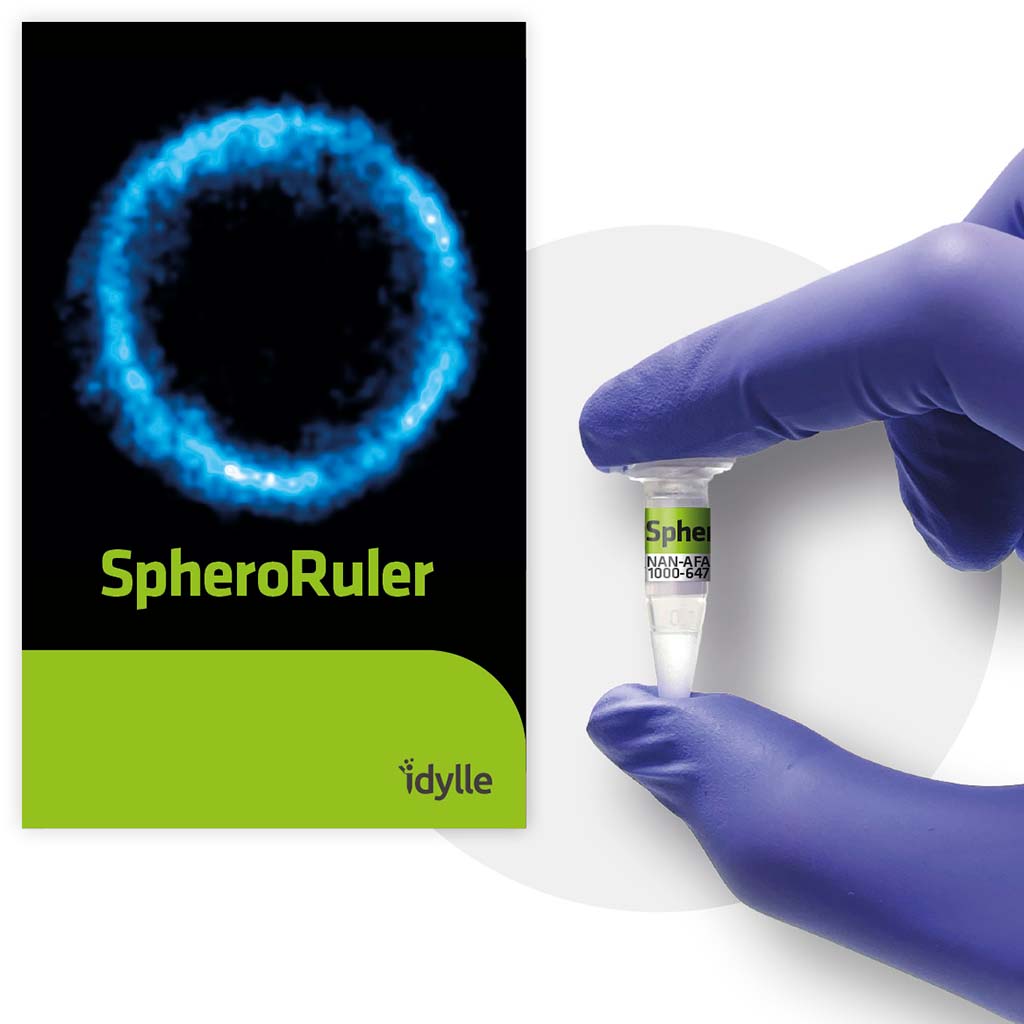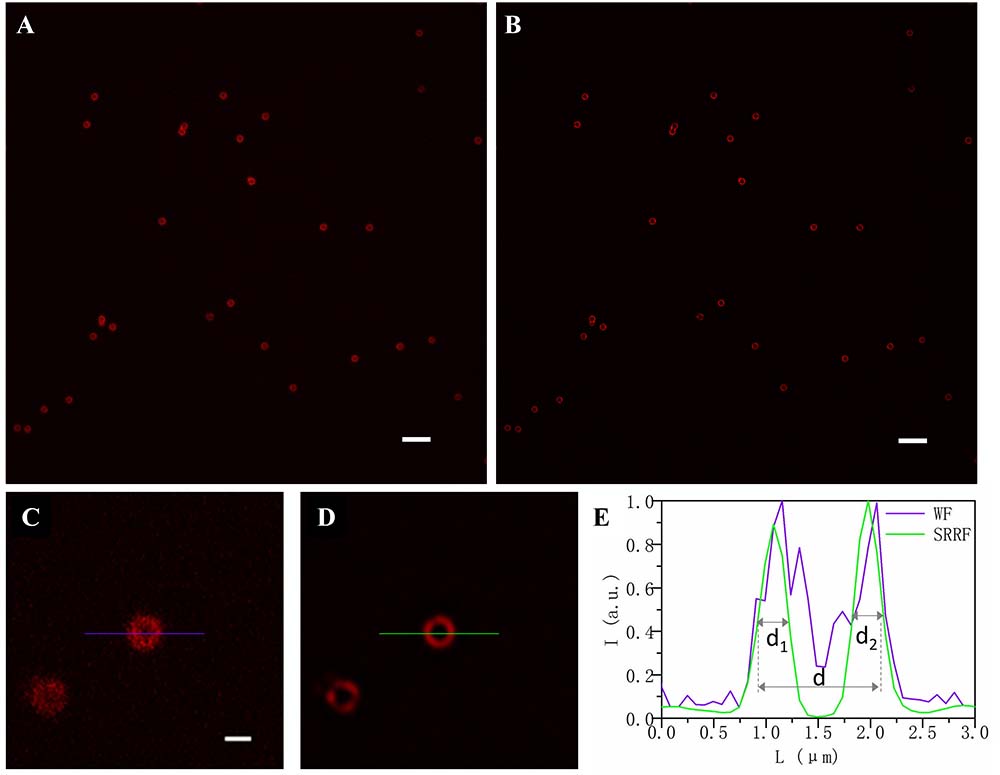Now you can you study cell behavior under confinement
Just released by Idylle, AgarSqueezer helps confine your adherent and non-adherent cells and study their behavior within a physiological rigidity range.
This new calibration tool for dSTORM is perfect to assess the accuracy of your x-y or z measurements, 3D reconstruction methods or super-resolution image quality.
SpheroRuler is a monodispersed suspension of 1µm diameter spheres coated with 647-fluorophores giving a stable blinking in SMLM microscopy. Their consistent size and geometry make them very practical and reliable standards to assess the accuracy of your x-y or z measurements, 3D reconstruction methods or your image quality. Monodispersed and immobile in solution, they can also be used as rulers, for drift correction or as guides to help localize features on your biological samples.

SpheroRuler is great for dSTORM calibration experiments because you can use it on your preferred support and buffer. And because you get confident with the new biological structure to image. SpheroRuler also produces simple shapes that are easy to study when you are a dSTORM beginner!

Your beads blink, you reconstruct a ring in 2D and a sphere in 3D experiments, and you check that you retrieve the 1 µm diameter.
This technology was originally designed by Arnaud Favier, Karine Monier and Christophe Place, and transferred by Idylle. After Everspark, SpheroRuler is the 2nd product designed together by this team and Idylle.

“It could have been one of those after-dinner conversations that would have ended there. Arnaud, Karine, Christophe and Mathieu, from Idylle, had a lively discussion about some of our experimental conditions in dSTORM. They came to talk about the confidence we can place in our instruments. Mathieu launched: “You should develop a calibration tool for dSTORM, it would be of great help for so many researchers”. This little phrase hung in the air… until we decided that it was a challenge that we liked and that we were going to take up. Today we are happy to launch SpheroRuler with the whole Idylle team.”
dSTORM
Direct STochastic Optical Reconstruction Microscopy: a type of super-resolution microscopy where a specific buffer causes the fluorophores in the sample to blink.
This blinking of the fluorophores allows algorythms to point the location of each fluorophore separately with better precision compared to having them fluoresceing all at the same time.
Then by repeating this process over a sufficient (1000+) amount of frames the algorythm may reconstruct a super-resolved image of the sample.
A range of fluorescence microscopy techniques allowing the user to go beyond the common resolution limit of conventional light microscopes (which is around 1/0,5um) down to 100 or even 10nm in resolution.
| SpheroRuler – Calibration beads for super-resolution microscopy (AFA-NAN-1000-647) |
We gladly support you by keeping you updated on our latest products and the developments around our services.